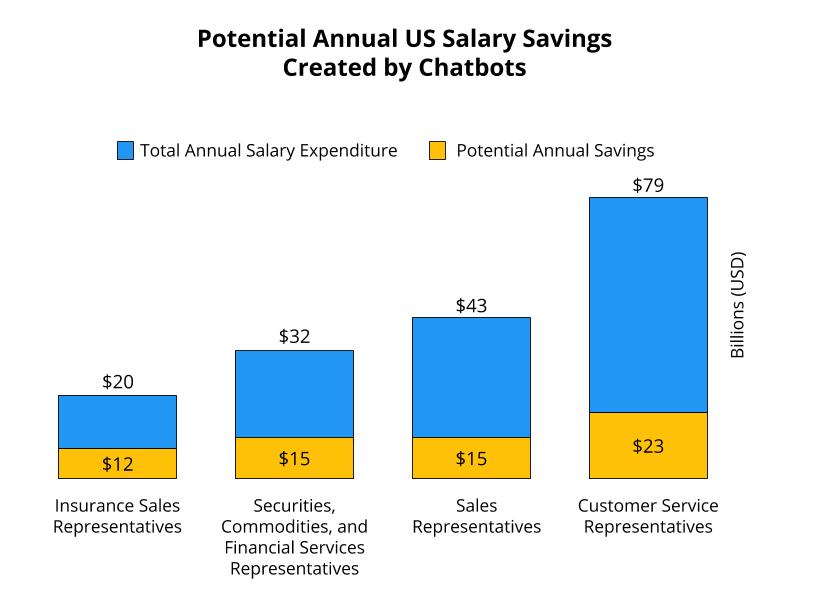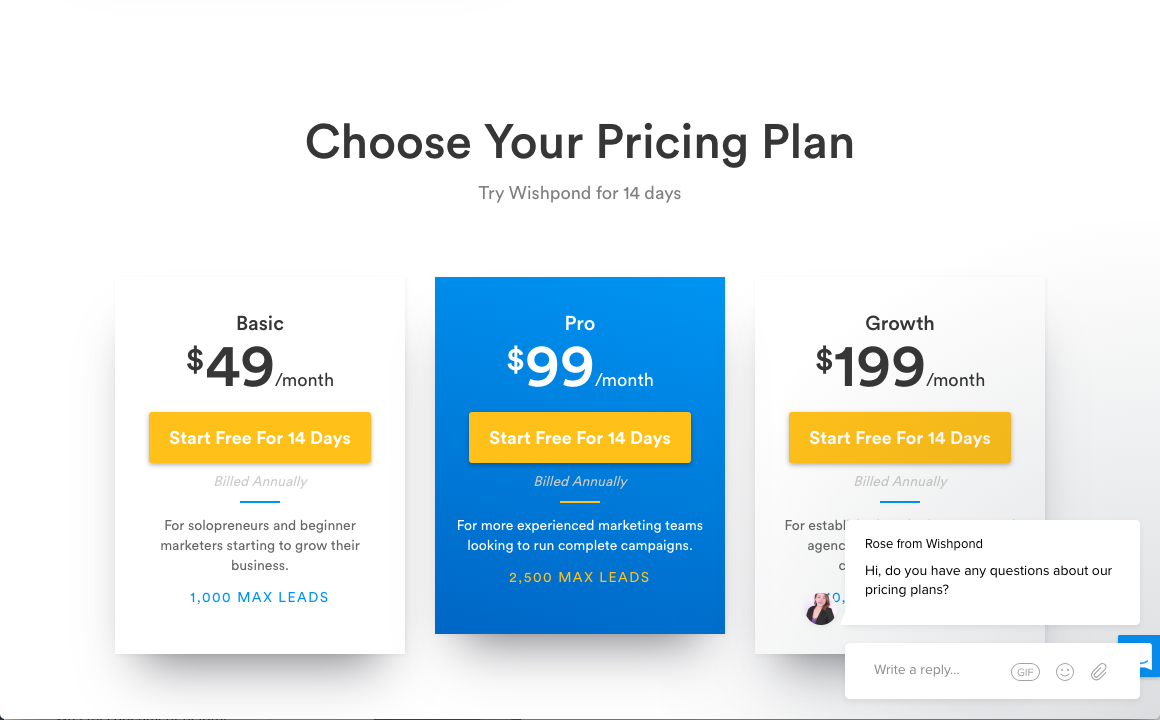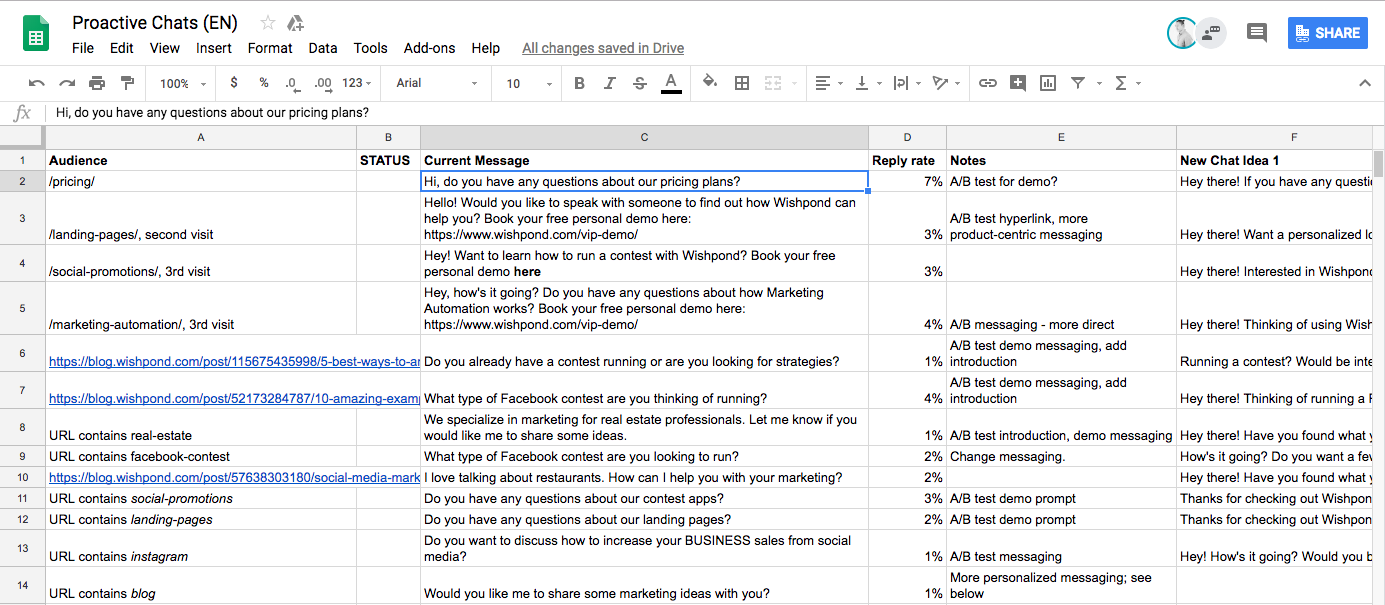If you’re a Wishpond customer or a regular reader of the Wishpond blog, you may have noticed our chat box on the bottom right.
This chat box is manned by a real person.
Except when it’s not.
Between midnight and 3am PST, and Saturdays between 9pm and 3am PST, that chat is manned by a bot.
And we’re not the only ones. Chatbots are popping up everywhere. In every industry and on every website.
But why? Why are all of these businesses moving to chatbots, and should you do the same?
This article takes a look at a chatbot case study – Expensify, where a chatbot boosted their free trial opt-in by 500%. We’ll examine the “why” behind chatbots as well as give you a walkthrough of implementing them for yourself.
Let’s dive in.
A few stats and case studies to whet your business growth whistle
- Chatbot implementation has gone up to 29%?—?46% in the past year, depending on business industry and department. (Source)
- Chatbots are estimated to be involved in 85% of all types of business-customers interaction by 2020 (Source)
- Chatbots have the potential to save businesses 38 billion dollars in sales and customer service roles alone. (Source)

- Chatbots have driven 30% increases in monthly revenue for Amtrak, and saved them $1 million in customer services costs.
- Chatbots have increased Sephora’s online bookings for makeup appointments by 11%.
- 48% of conversations with Covergirl’s chat bot are leading to coupon delivery and 51% of coupons are clicked-through.
- Barkbox’s Twitter bot drove 2,400 messages in the first month.
- Air Jordan’s personal trainer bot is seeing a 70% completion rate for its “Jordan Breakfast Club” training program.
(Source)
So let’s take a look at how Expensify (and others) have driven huge results with chatbots, and how you can do the same.
How Expensify got 5X more customers with chatbots
Expensify is a tool that automates expense reports and reimbursement. Their chatbot, Concierge, was added to their site in September of 2016.
They added Concierge at several crucial steps of their customer’s experience with their software:
- Before a prospective customer becomes a customer
- During the setup process
- Before a broken connection becomes a problem
These three points of contact are ones you should remember, as they’re, frequently, the most common places someone is going to abandon your software or company and go elsewhere.
Chatbots can help with that.
Introducing a chatbot before signup
In the “shopping around phase” having a chatbot ready to answer any and all questions, at a moment’s notice, can be the difference between a purchase and an “I’m out!”

Consider that, according to InsideSales, a ten minute delay will reduce your chances to get the contact information of a prospective customer by up to 400%. Chatbots allow you to respond immediately.
Concierge answers the questions of prospective customers as soon as they asked them, no matter if it was Sunday night at 3am.
It was this kind of attentiveness which helped them boost free trials by 500% – this kind of “being there when they need you” which can massively improve your own website’s efficiency.
Adding a chatbot during the setup process
Concierge welcomes new users as soon as they arrive to the platform, introduces herself, and starts a 4-step setup process which includes the most essential elements of their onboarding.

Making the setup process of a tool, app, or ecommerce account registration feel personalized with a “Hi, I’m concierge. Let’s get you set up!” increases your chance of completing that setup.
Because you’ve had a good experience with the chatbot before you signed up, it’s essential the continued relationship is also good – so don’t muck it up here.
Adding a chatbot before a problem is noticed
Expensify added a troubleshooting element to their chatbot, which enabled them to “see” the most common bugs and notify you of them before you noticed yourself.
For instance, if a user connects a credit card to their account, and that credit card expires or the connection is lost, Concierge sees it before the user does and notifies them – thereby fixing the problem before it becomes one.
Problems with a tool, app or customer relationship are often among the most likely reason a customer will leave.
Expensify CEO David Barrett has credited this feature alone for reducing “banking problems” by 75%.
The Value-Add
If your chatbot is doing nothing more than answering the questions of prospective customers, setting up demos, and walking new users through the setup process, you’re still going to be seeing huge results.
But, if you can go a bit farther, you absolutely should.
Expensify connected their chatbot with, (bear with me), their “custom georedundant NewSQL database, Bedrock. [Which is] designed for very high performance/availability ACID-safe relational data using a […] WAN-optimized replication protocol atop a Paxos-based distributed transaction system.” (Source)
For me (and, I think, a lot of our readers), that’s only relevant when I tell you what this added to their chatbot’s capability…
Concierge, as the chatbot for an automated expense report tool, has an extra little feature: “She not only knows every expense ever reported by anybody, she also knows the real-time pricing of every flight, hotel, and car in the world. This means Concierge will discreetly notify you if you’re getting the best value for your travel dollar.“
Essentially, if I submit an expense report for my recent hotel stay in San Francisco, Expensify’s chatbot will check what I paid compared to the other users who submitted an expense report for a recent hotel stay in San Francisco. If I’ve overpaid compared to the average, it will let me know.
Now, your next chatbot may not quite be up to tracking the “real-time pricing of every flight, hotel, and car in the world…”
But that doesn’t mean you can’t get rolling with chatbots anyway.
Next steps
Step 1: Determine where you want your chatbot to be shown.
There are a few options here:
- Your website, before people convert
- Your website, after people sign up
- Your website, during checkout
- Your website, upon setup
For instance, one of our most essential chatbots (it’s a live chat 90% of the time) is on our pricing page:

Step 2: Determine which chatbot provider you want to choose.
We at Wishpond don’t have any skin in the chatbot game, so I’ll just name a few of the top providers without bias:
Leading Chatbot providers:
Step 3: Write your copy:
When we were putting together chatbots for our blog and website, we created a spreadsheet with all the URLs on which the chatbot would show, as well as the copy:

Step 4: Launch!
Final Thoughts
Hopefully this walkthrough has given you a good foundation for starting off with chatbots.
Things to remember:
- Focus on placing your chatbot at vital places where your website traffic tends to drop: product pages, pricing, signup, checkout and account setup.
- Offer value, not just sales. Focus on building a chatbot which answers questions (consider linking to your existing knowledge base or blog). Don’t just prompt a demo or call, unless
- Know when to turn off the automation. You should have trigger words or phrases which result in your chatbot sending the message to a real person. For instance, you probably don’t want “Can I speak with a sales person?” to get an automated response.
And if you have any questions, don’t hesitate to reach out in the comment section. I’d love to hear from you!
Related Reading:
- Smart Website Additions Guaranteed to Boost Sales
- The Ecommerce Guide to Online Marketing
- 5 Ways You Can Do More With Your Website Traffic
- 10 Ways Chatbots Can Boost Your eCommerce Business

